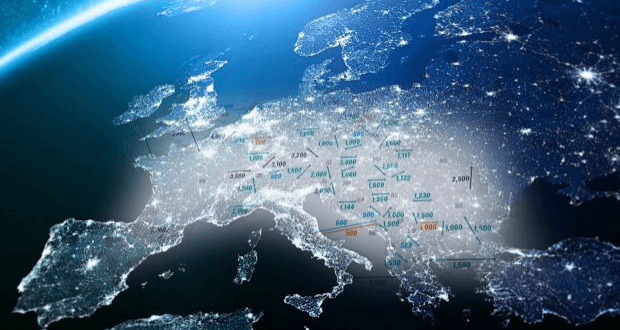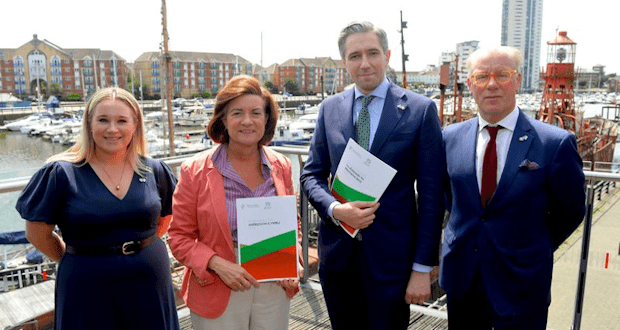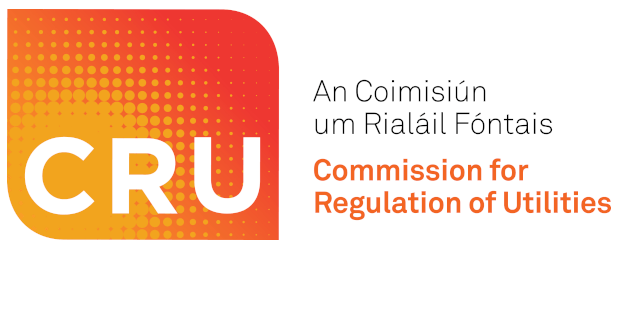Rystad Energy’s current base case forecast has Europe adding as much as 530 gigawatts (GW) of solar PV and onshore and offshore wind between 2022 and 2030, more than 66 GW per year on average. Furthermore, the share of solar and wind combined as a share of total installed capacity surpassed 10% in 2010 and more than tripled in 2021, reaching 34%, according to Rystad Energy research.
Growth is not expected to slow down anytime soon, as European countries are planning huge additions of renewables over the next few years. If Europe is to remain a leader in the energy transition, a huge amount of grid capacity will need to be developed, both to integrate new generation capacity into respective countries’ power mixes and to better connect European countries so that electricity can flow in the most optimal way.
The staggering amount of new solar and wind capacity expected to come online in Europe in the coming years means that grid interconnectivity will be the bottleneck to both the more efficient use of energy sources as well as overall slower decarbonization of the power sector as more fossil fuels need to be used to compensate. Historically, this has been much less of an issue as Europe’s power system has been dominated by four large sources – coal, gas, nuclear and hydropower – all with varying degrees of dispatchability but none considered intermittent.
With the pace of renewable energy development substantially exceeding the speed of grid upgrades and expansion projects in parts of Europe, policymakers and the power sector will need to carefully examine if a country’s development plans for new generation capacity match its development plans for both internal and cross-border transmission capacity. The timelines for new projects are very long and some countries in Europe are already curtailing renewable power that could be used elsewhere – for instance, Germany curtailed about 10.2 terawatt-hours (TWh) of wind power in 2017, the highest of any European country to date. The yearly average is around 5% of variable renewable energy curtailed, highlighting how bottlenecks are already an issue.
“Europe’s increasingly connected power grid is one of the first globally to take on substantial amounts of renewable and intermittent power. Moving power around the continent to minimize the use of carbon-emitting fuels will only be possible if the grid is upgraded. This will not be simple, quick, or cheap, but it will reduce greenhouse gas emissions and increase energy security. The race is now on to see if grid upgrades can match the staggering levels of new renewables set to come online in the next decade,” says Fabian Rønningen, senior analyst, power markets at Rystad Energy.
Europe’s grid will need to connect northern winds and southern sunshine
The below chart shows how the existing capacity base and future capacity will be spread unequally between European countries, with the likes of the North Sea emerging as another European energy hub with hundreds of GW of capacity planned to come online in the coming decades. For a future energy system, in which Europe’s energy sources are utilized optimally, both policymakers and industry will have to think differently about grid development, compared to the status quo. Most of the new capacity that will come online in Europe in the coming decades will be solar and wind, with such resources varying significantly across the continent. Southern parts of Europe have better solar conditions than the north, while wind resources are highest in the northern and eastern regions of the continent, as well as all coastal and offshore areas. This means that Europe’s future energy system could have a much higher degree of electricity flows between countries than we see today, despite Europe already being considered well interconnected.
Case study: Spain
Spain has emerged as one of the European leaders when it comes to both solar and wind development, and currently has one of the largest renewables pipelines in Europe. Spain has the most economic solar potential of the large European countries due to its sizeable landmass and high yearly solar irradiation, while it has also been a pioneer in the European wind industry. Furthermore, due to its relatively weak coupling to the rest of continental Europe, Spain provides an excellent example of how internal European grid bottlenecks could hamper Europe’s energy transition.
Although grid development within Spain is expected to grow rapidly over the coming decade, only three high-voltage interconnectors to France are currently planned, two of which are not expected to come online before 2027. This is just one example of potential bottlenecks Europe could face over the next decade, as hundreds of GW of solar and wind power come online, while the development of supporting grid infrastructure lags, especially cross-border interconnections. Policymakers need to ascertain whether grid development plans are in line with ambitious renewable energy targets to ensure transmission capacity does not constrain the energy transition.
Installed capacity from renewable energy sources in Spain will more than double by 2030 in Rystad Energy’s current base case forecast. While installed capacity from non-renewable energy sources will drop from 54 GW in 2022 to 34 GW by 2030, capacity from renewable energy sources will grow from 64 GW to 151 GW. Solar will drive most of the growth in renewables, primarily driven by developments in central Spain. Expansion plans for transformer capacity are set to keep up with these ambitious growth targets in installed capacity. Spain’s transmission system operator (TSO), Red Electrica, has mapped out detailed plans for upgrades and expansions to its transmission network. Towards the end of this decade, these plans could see transformer capacity grow by more than 220% compared to 2022 levels. Although these upgrades to the network are planned across Spain, most capacity looks set to be added in southern and central Spain, particularly in communities such as Andalucia and Castilla y Leon (Figure 4). These are also the regions where most of the planned solar and wind capacity will come online in the next few years.
The last time a high-voltage interconnector between Spain and France went operational was in 2015. In subsequent years, the countries acknowledged the mutual benefits of further integrating their power grids by projecting three other high-voltage direct current connectors across their shared border. One of the projects is a 400-kilometer link that will run between the Cubnezais substation (near Bordeaux, France) and the Gatika substation (near Bilbao, Spain), known as the Bay of Biscay project. The interconnector will mainly be laid subsea in the Atlantic Ocean with the rest buried underground, and will be the first submarine interconnector between Spain and France. The project has total transmission capacity of 2 GW and will lift total interconnection capacity between the two countries to 5 GW. The project is currently expected to be completed by 2027. Additionally, the countries are investing in reinforcements to existing interconnectors.
When it comes to the use of France-Spain interconnectors, power has mainly flowed into Spain. Spain has been a substantial net importer of French electricity every year since 2016, with 12.4 TWh of net yearly imports at peak in 2017. This year will show a significant change with Spain a net exporter to France every month in 2022 except for February, amid a large shortfall in French nuclear generation. From 2016 to 2022, Spain was a large net importer of cheap French nuclear power, while in 2022 Spain had the flexibility to increase mainly gas-fired power generation to support French consumers amid the energy crisis. This further highlights the benefits of increased interconnectivity for both countries. Furthermore, Spain is currently one of the largest generators of renewable power in Europe and has an impressive pipeline of renewable energy projects, while a substantial proportion of electricity exported to France so far in 2022 has been solar and wind.
Unlike Spain, France has not planned to increase the share of renewable energy sources in its power mix to the same extent. The situation with nuclear power in France is expected to improve in 2023, which will also benefit Spain. With more interconnectors between France and Spain, the two can rely on each other during periods when their power production is low. Given the abundant renewable energy power that will be produced in Spain, France will then be able to import clean, renewable energy when the sun shines and the wind blows. On the other hand, Spain will be able to import stable and dispatchable energy from France’s nuclear reactors to fill the intermittency gaps when the weather is less favorable. In other words, expanding high-voltage connections between the two power grids will benefit both countries and the wider European region.
This begs the question: is enough interconnector capacity being developed in Spain and France compared to the pace of renewable installations? The timelines of the interconnector projects are very long, as shown by the Bay of Biscay project, which is expected to take 10 years from initial consultations started in 2017 until it is expected online in 2027. As an illustration, 5 GW of transmission capacity will be able to interchange roughly 40 TWh per year if used at very high utilization factors – a substantial amount, but relatively small compared to total power demand in both countries. Both countries’ power demand is also expected to increase rapidly after 2025, as the electrification of their economies continues. Furthermore, the Spain-France example is just one of many. Many of the same questions will arise in other parts of Europe, especially as the North Sea is emerging as another European energy hub with hundreds of gigawatts of capacity planned to come online in the coming decades. Therefore, both policymakers and the power sector should carefully examine if a country’s development plans for new generation capacity match with its development plans for both internal and cross-border transmission capacity. The timelines for new projects are very long and Europe simply cannot afford grid bottlenecks halting its energy transition plans.
Original article – https://uk.finance.yahoo.com/news/grid-bottlenecks-could-derail-europe-220000664.html?guccounter=1&guce_referrer=aHR0cHM6Ly9zZWFyY2guYnJhdmUuY29tLw&guce_referrer_sig=AQAAANjBBnlBm2NzS5QMqzh-S6NJFmsYjzP13iwys66RhLzyFfAQK8y3GdI6oaIT21uRyVqjfsen8ZhX-gytwaGXQeodG7u3x6TADZ0xnA2NPS8uhdmL_tvd_14jiQUQpwhotxBlXrfu6AVKaw3KNwQY4l5s9ZBoVzlYGJm5lgNzGZkH



